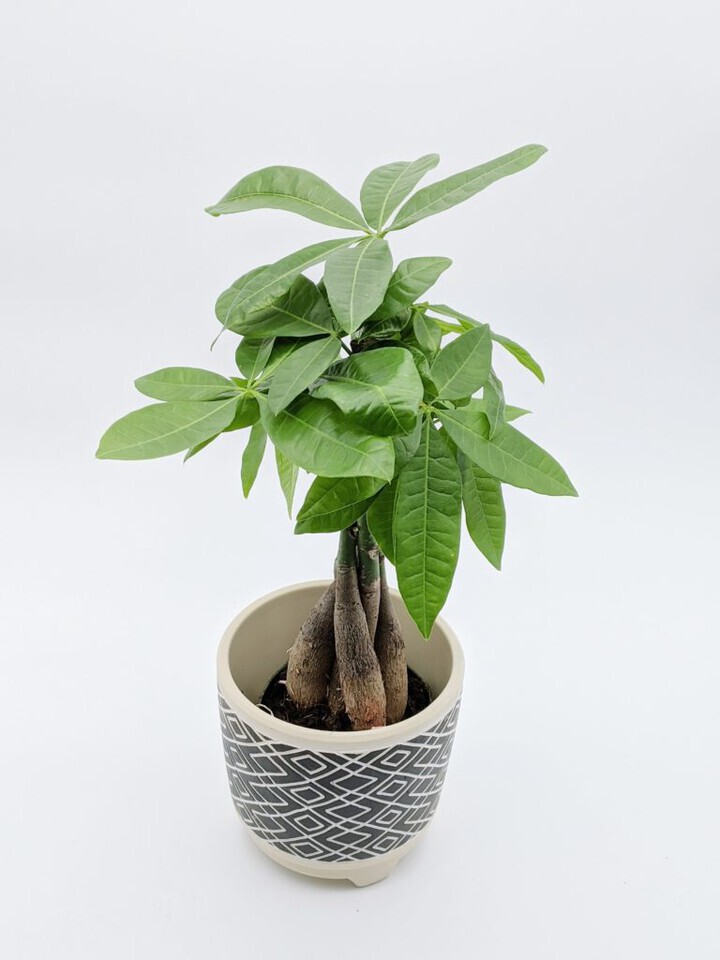Money Tree, or Pachira aquatica, typically comes from northern South America. According to lore, luck becomes “trapped” in the braided trunk. Although Money Tree does not naturally grow in its braided form, growers will actually train the young, pliable “trunks” of Money Tree into a braided shape. Money Tree is also said to be good for Feng Shui as the five sections of its palmate leaves represent the five elements (earth, fire, air, wind, and metal). As if that weren’t enough interesting information, this little indoor tree is related to cotton and hibiscus as a member of the Malvaceae! This particular member of the Malvaceae family can be expected to grow up to 6 feet tall indoors, but will not bloom.
To care for Money Tree, start by planting it in a well-draining pot with soil that is also well-draining, and preferably somewhat sandy. Place Money Tree in a spot that will get medium to bright indirect light, and is typically between 65 and 80 degrees Fahrenheit. Watch out for drafts, vents, and cold windows as Money Tree very much prefers a consistent environment. If Money Tree is relocated or if something in its environment changes, you’ll likely see it drop some leaves. Money Tree is pet safe and air cleaning, so combined with the ability to survive with only medium indirect sunlight, this plant has greater flexibility than many other houseplants when it comes to where it can be placed. It does, however, prefer humidity, so it might end up needing a humidifier or to be placed in a bathroom with at least medium sunlight (though Money Tree can also tolerate artificial light, so you can add light as needed.)

Money Tree is also great for a gift or for beginner Plant Parents because it has much lower watering requirements than most houseplants. While the majority of houseplants need to be watered when the top one to two inches are dry, you can wait until the top 4 inches of Money Tree are dry to water it. To water Money Tree, go with the standard “Drench and Drain” method of allowing water to pour over the soil for a few minutes, then allowing all of that water to completely drain out of the bottom of the pot before placing it back in its home. If your pot does not have drainage at the bottom, we highly recommend a Moisture Meter. This tool can help you to determine the level of moisture at the bottom of the pot before you water, and it can also help you gauge how much water to give your plant since it won’t be able to run out the bottom. Never let a plant sit in soggy soil!